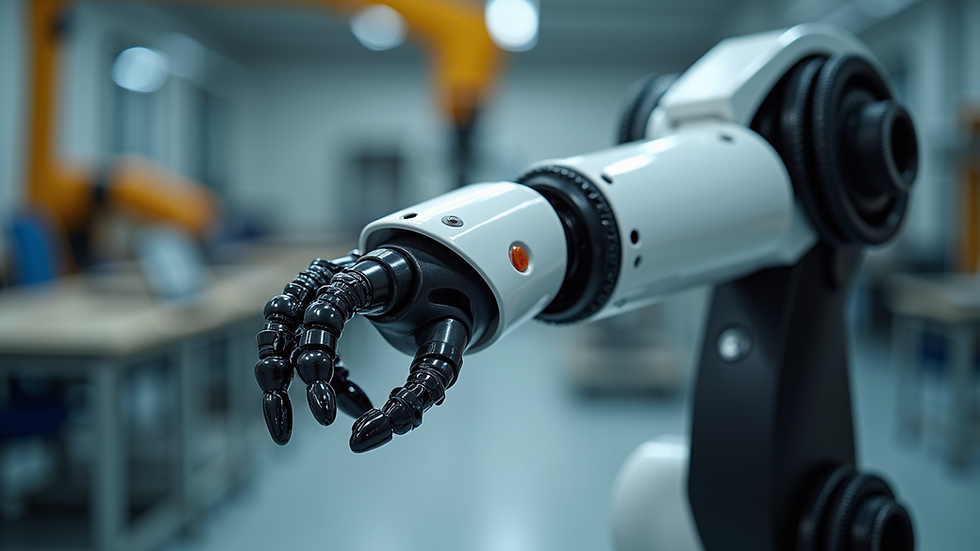Emerging Robotics Automation Trends to Watch in 2025
- Macy Mo
- Nov 15, 2024
- 2 min read
As we enter 2025, robotics automation continues to advance, bringing new technologies and practices that can transform industries. Here are the top trends that are expected to make a big impact in the coming year, reshaping how businesses leverage robotics to drive efficiency, safety, and productivity.

1. AI-Driven Predictive Maintenance
One of the most impactful advancements in robotics automation is the use of artificial intelligence for predictive maintenance. By analyzing data from sensors on robotic equipment, AI can predict potential issues before they happen, allowing companies to take proactive action. This minimizes unplanned downtime, lowers maintenance costs, and increases the longevity of robotic systems.
Why It Matters:
Reduced Downtime: Prevents unexpected breakdowns with early detection.
Cost Savings: Optimizes servicing schedules, reducing repair expenses.
Improved Efficiency: Keeps equipment running smoothly to boost productivity.
2. Real-Time Fleet Optimization
In 2025, fleet management systems are expected to become even more advanced, allowing companies to dynamically adjust robotic routes and schedules in real-time. By monitoring factors like operational demands, bottlenecks, and environmental conditions, businesses can further optimize their robotic fleets for maximum efficiency.

Why It Matters:
Enhanced Productivity: Reduces idle time and improves operational flow.
Adaptable Operations: Quickly responds to demand changes.
Cost Efficiency: Lowers energy use and wear on robotic systems.
3. Strengthened Safety and Compliance Standards
With robots increasingly working side by side with humans, 2025 will likely bring tighter safety standards and compliance regulations. Expect to see enhanced sensors, better safety protocols, and updated regulatory frameworks that minimize risk and facilitate smooth human-robot interaction.
Why It Matters:
Safe Collaboration: Robots can operate safely alongside human teams.
Regulatory Compliance: Meets stricter safety standards, reducing compliance risk.
Reduced Liability: Lowers the chance of workplace accidents, protecting staff and equipment.
4. Expansion of Collaborative Robots (Cobots) into Diverse Sectors
While collaborative robots (cobots) have been primarily used in manufacturing, 2025 will see them expanding into industries such as logistics, healthcare, and hospitality. These robots work alongside human teams, taking on repetitive tasks and freeing employees to focus on more complex work.
Why It Matters:
Labor Support: Assists with labor shortages by automating repetitive tasks.
Adaptable Roles: Fits seamlessly into various industry functions.
Increased Productivity: Frees up human workers for value-added tasks.
5. Autonomous Mobile Robots (AMRs) for Multi-Environment Tasks
Autonomous Mobile Robots (AMRs) are evolving to navigate even more complex environments, including outdoor and multi-surface areas. This versatility allows robots to manage inventory, transport materials, and conduct other tasks across varied settings without needing manual intervention.
Why It Matters:
Versatile Deployment: Operates across diverse environments, from warehouses to outdoor sites.
Enhanced Flexibility: Takes on broader responsibilities, reducing the need for multiple systems.
Cost Savings: Lowers dependence on specialized vehicles or human support in challenging settings.
%20(1).jpg)


